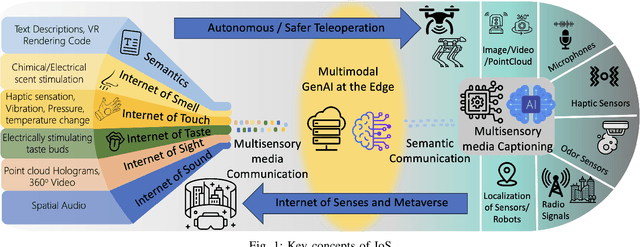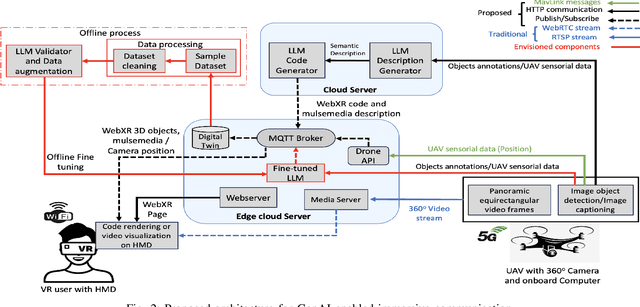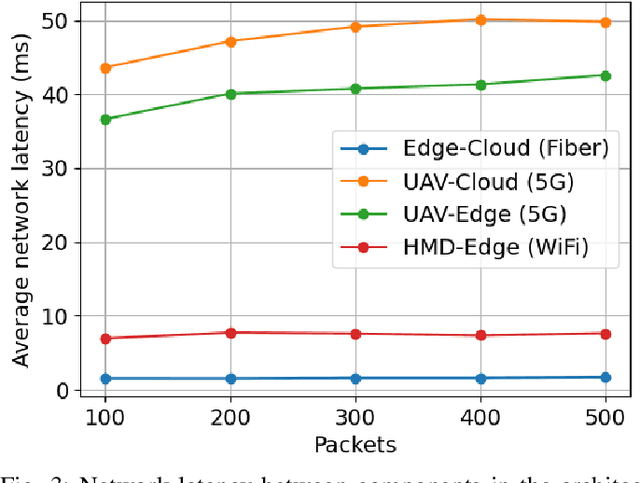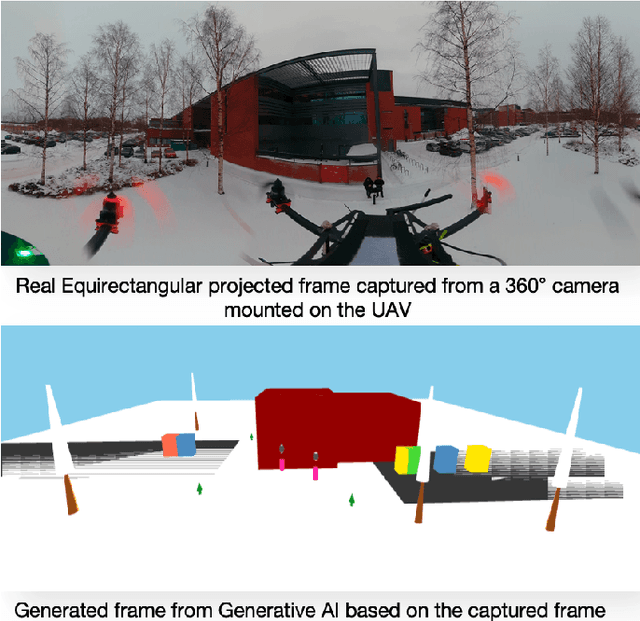Generative AI for Immersive Communication: The Next Frontier in Internet-of-Senses Through 6G
Paper and Code
Apr 02, 2024



Over the past two decades, the Internet-of-Things (IoT) has been a transformative concept, and as we approach 2030, a new paradigm known as the Internet of Senses (IoS) is emerging. Unlike conventional Virtual Reality (VR), IoS seeks to provide multi-sensory experiences, acknowledging that in our physical reality, our perception extends far beyond just sight and sound; it encompasses a range of senses. This article explores existing technologies driving immersive multi-sensory media, delving into their capabilities and potential applications. This exploration includes a comparative analysis between conventional immersive media streaming and a proposed use case that leverages semantic communication empowered by generative Artificial Intelligence (AI). The focal point of this analysis is the substantial reduction in bandwidth consumption by 99.93% in the proposed scheme. Through this comparison, we aim to underscore the practical applications of generative AI for immersive media while addressing the challenges and outlining future trajectories.
 Add to Chrome
Add to Chrome Add to Firefox
Add to Firefox Add to Edge
Add to Edge